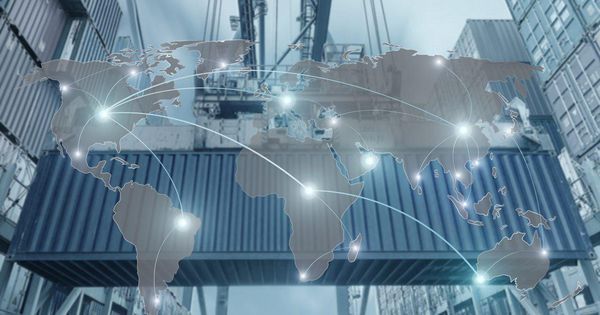Robots are getting lighter, faster, stronger and smarter. Marc Rybert, founder of Boston Dynamics shows the latest developments at CEBIT 2018.
Courtesy of CEBIT. June 2018.
Robots are getting lighter, faster, stronger and smarter. Marc Rybert, founder of Boston Dynamics shows the latest developments at CEBIT 2018.
Courtesy of CEBIT. June 2018.

It’s not unrealistic to think that 80% of what doctors do will be replaced by algorithms and artificial intelligence. The idea, evangelized by venture capitalist Vinod Khosla two years ago, is that machines can more accurately diagnosis us — and that will reduce deadly medical errors and free doctors up to do other things.
The bottom line: We’re getting closer to this reality. Algorithms, for example, can already diagnose diseases from imaging scans better than human radiologists. Computers possibly could take over the entire radiology specialty.
Read more toggle.
RIPPA, a fully autonomous robot, can cover five acres a day on a solar charge — finding and exterminating pests and weeds on every single plant over the equivalent of four football fields. Are robots like RIPPA the future of farming?
RIPPA stands for “Robot for Intelligent Perception and Precision Application”.
Catalyst joins engineers from the Australian Centre for Field Robotics as they explore the world of agriculture to develop robots and smarter ways of farming.
Watch Catalyst on ABC iview now: https://iview.abc.net.au/programs/catalyst
SUBSCRIBE: http://ab.co/CatalystYouTube
About Catalyst:

That growth in factory worker salaries has been a double-edged sword for China. On one hand, it has increased the purchasing power of Chinese which in turn has powered consumer-led economic growth, but on the other it has made China less competitive on wages and forced companies like Foxconn to introduce more automation.
With 1 million employees and half a dozen factories contributing 4 per cent of the country’s export value, Foxconn’s expansion symbolises China’s role as tech manufacturing powerhouse.

Robots aren’t playing professional soccer just yet, but they can certainly help predict it! With the FIFA World Cup kicking off, San Francisco-based tech firm Unanimous A.I. has used its considerable artificial intelligence expertise to predict the outcome of the 32-team men’s soccer tournament. Given that the startup has previously predicted the Super Bowl results successfully right down to the exact final score, we totally think this is worth taking seriously.
“These predictions were generated using swarm A.I. technology,” Louis Rosenberg, founder and CEO of Unanimous A.I., told Digital Trends. “This means it uses a unique combination of human insights and artificial intelligence algorithms, resulting in a system that is smarter than the humans or the machines could be on their own. It works by connecting a group of people over the internet using A.I. algorithms, enabling them to think together as a system, and converge upon predictions that are the optimized combination of their individual knowledge, wisdom, instincts, and intuitions.”
The technology is modeled on the remarkable abilities of swarms in nature, such as swarms of bees, schools of fish, or flocks of birds. These natural swarms combine the insights of large groups in optimized ways. Unanimous’ swarms utilize this same principle to answer complex questions — such as giving precise probability-based outcomes on each game in the World Cup.
Recommended Books ➤
📖 Life 3.0 — http://azon.ly/ij9u
📖 The Master Algorithm — http://azon.ly/excm
📖 Superintelligence — http://azon.ly/v8uf
This video is the ninth in a multi-part series discussing computing and the second discussing non-classical computing. In this video, we’ll be discussing what quantum computing is, how it works and the impact it will have on the field of computing.
[0:28–6:14] Starting off we’ll discuss, what quantum computing is, more specifically — the basics of quantum mechanics and how quantum algorithms will run on quantum computers.
[6:14–9:42] Following that we’ll look at, the impact quantum computing will bring over classical computers in terms of the P vs NP problem and optimization problems and how this is correlated with AI.
[9:42–14:00] To conclude we’ll discuss, current quantum computing initiatives to reach quantum supremacy and ways you can access the power of quantum computers now!

A spacecraft, spinning in Earth’s orbit, reaches inside itself. One of its four arms pulls out a length of polymer pipe that has been 3D-printed inside the body of the machines. All four of the spacecraft’s arms are securing pieces together as it builds a new space station right there in orbit.
This surreal project, called Archinaut, is the future vision of space manufacturing company Made In Space. The company promises a future of large imaging arrays, kilometer-scale communications tools, and big space stations all built off-planet by smart robots.

Autonomous deliveries and drones
UPS execs insist that the UPS driver is a core element to its success and the face of the company, but they have tested the use of drone deliveries for some applications including dropping essential supplies in Rwanda and demonstrating how medicine could be delivered to islands. In rural areas, where drones have open air to execute deliveries and the distance between stops makes it challenging for the drivers to be efficient, drones launched from the roofs of UPS trucks offer a solid solution to cut costs and improve service. Drones could also be deployed in UPS sorting facilities and warehouses to get items on high shelves or in remote areas.
The technology used by UPS generates a cache of data that opens up even more opportunities to become more efficient, improve the customer experience, innovate delivery solutions, and more. From optimizing the UPS network to driving operational improvements, big data and artificial intelligence are at the core of UPS’s business performance.

Pasadena-based artificial intelligence tech startup Oben is about to roll out its first product, PAI (Personal AI), a consumer app designed to let users create an AI-driven avatar with their own look and voice.
Its underlying AI technology is already getting some select professional use. Overall, Oben’s team believes AI can have a wide range of uses including in virtual and augmented reality, gaming, content creation and retail.
With PAI, users essentially “teach” the app about themselves. “You take a selfie, and a visual avatar is ready in the app,” Oben CEO and co-founder Nikhil Jain explained, adding that users can then customize their look. Plus, simply by speaking a few sentences, users can teach their avatar to talk or sing. These features can be used on social media and the like.